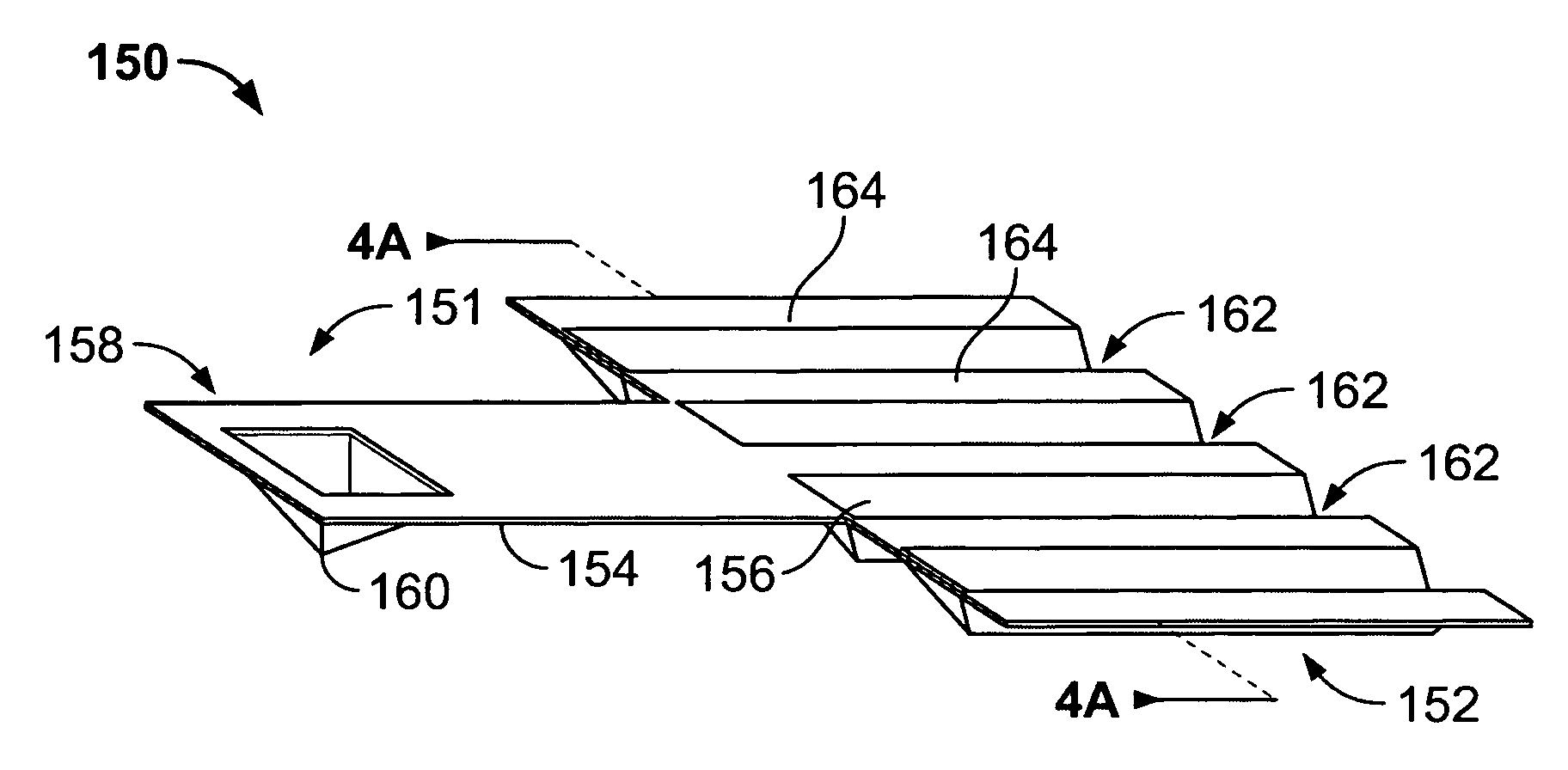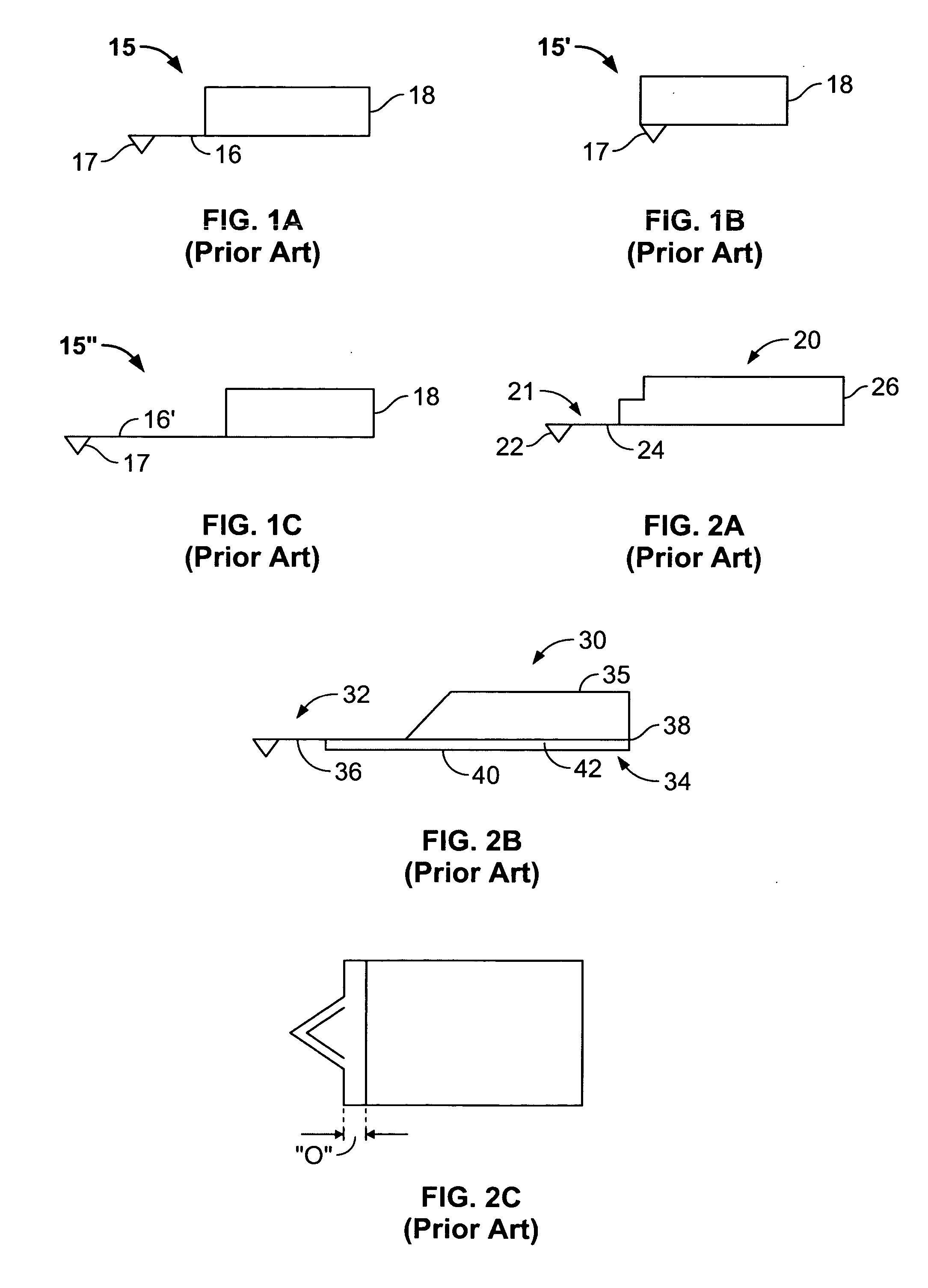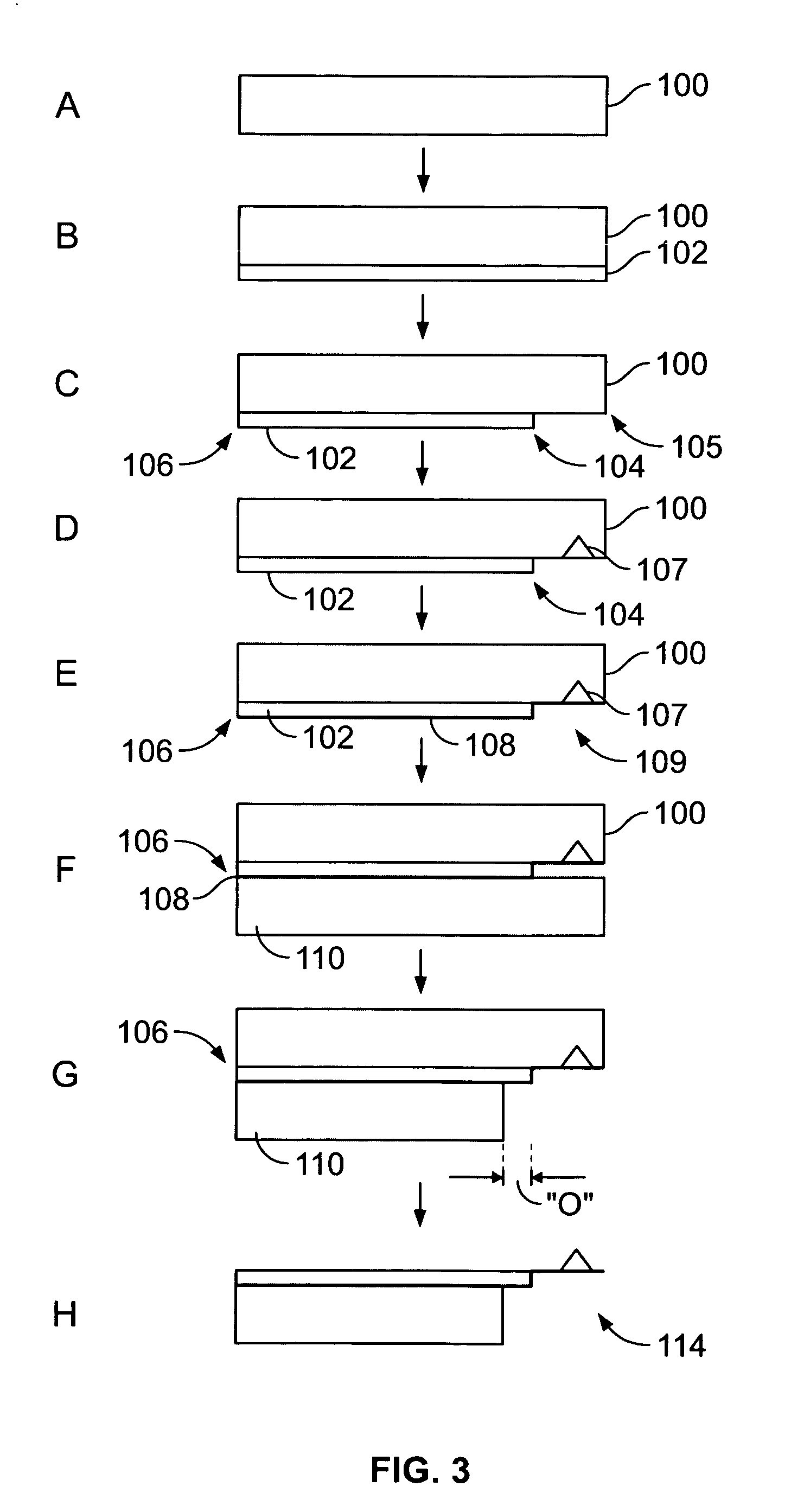Probe for a scanning probe microscope and method of manufacture
a scanning probe and microscope technology, applied in the direction of instruments, mechanical roughness/irregularity measurements, measurement devices, etc., can solve the problems of inability to accurately control the dicing from the backside of the batch fabricated probe assembly, and the difficulty of bulk manufacturing of probes with such short lengths,
- Summary
- Abstract
- Description
- Claims
- Application Information
AI Technical Summary
Benefits of technology
Problems solved by technology
Method used
Image
Examples
Embodiment Construction
[0040] Turning initially to FIG. 3, the bulk production of a probe assembly having a short, sub-20 micron cantilever, is illustrated in a series of fabrication steps. Moving from top to bottom, the process is initiated with a sacrificial silicon wafer 100 provided in step A. Then, a buffer layer 102 is deposited on the back side of wafer 100 in step B. Buffer layer 102 may be a silicon oxide or a silicon nitride, for instance, and will interface the flexible cantilever of the probe, described further below. Layer 102 is designed to be much stiffer than the cantilever that will ultimately extend therefrom, and facilitates batch fabrication of the probe assembly by eliminating the uncontrollable offset that can result when dicing the probes, and specifically the substrate coupled to the probe during process. This stiffness is preferably achieved by forming layer 102 to have a significantly greater thickness than the layer that will become the cantilever. For instance, the thickness of...
PUM
 Login to View More
Login to View More Abstract
Description
Claims
Application Information
 Login to View More
Login to View More - R&D
- Intellectual Property
- Life Sciences
- Materials
- Tech Scout
- Unparalleled Data Quality
- Higher Quality Content
- 60% Fewer Hallucinations
Browse by: Latest US Patents, China's latest patents, Technical Efficacy Thesaurus, Application Domain, Technology Topic, Popular Technical Reports.
© 2025 PatSnap. All rights reserved.Legal|Privacy policy|Modern Slavery Act Transparency Statement|Sitemap|About US| Contact US: help@patsnap.com



